12 Fascinating Facts About Luxor Hot Air Balloon Rides
Interesting facts about Luxor hot air balloon rides
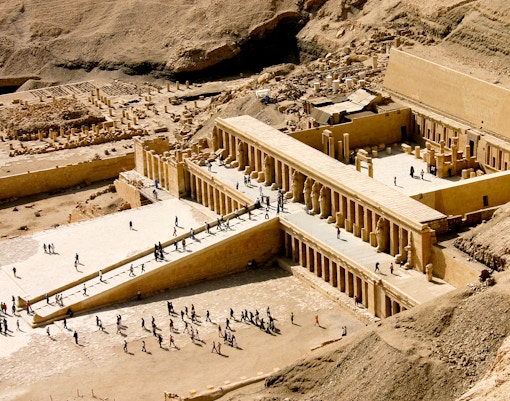
Valley of the Kings
Home to more than 60 royal tombs, including Tutankhamun’s, this legendary necropolis was once reserved for Egypt’s most powerful pharaohs. At sunrise, it dazzles from above, with cliffs and hidden entrances glowing in golden light.
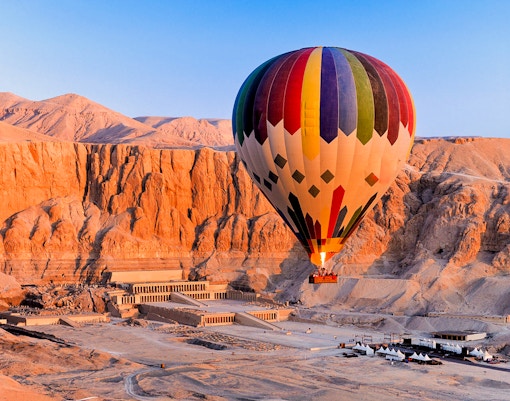
Temple of Hatshepsut
This dramatic mortuary temple, carved directly into limestone cliffs, honors Egypt’s most successful female pharaoh. Its striking, terraced design stands out brilliantly against the rugged desert when viewed from your balloon.
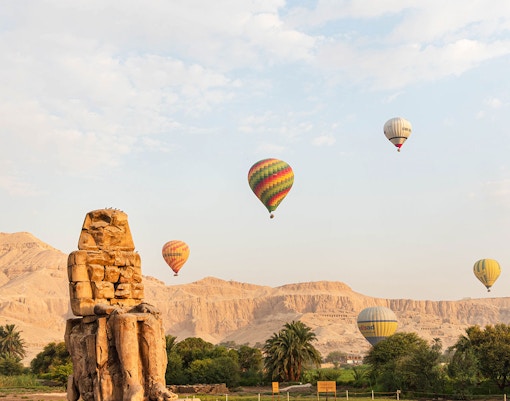
Colossi of Memnon
Two massive seated statues, over 3,400 years old, once “sang” at sunrise due to tiny cracks caused by earthquakes. Ancient travelers described the eerie sound—today you can spot them easily from the air.
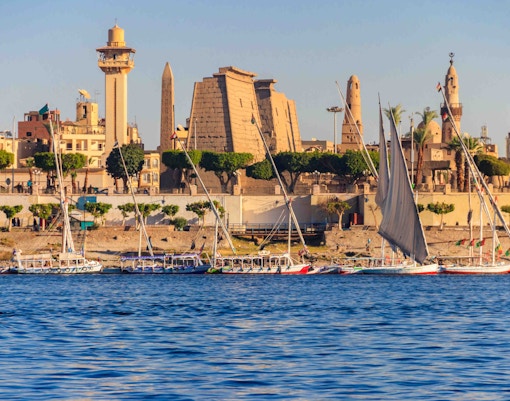
Nile River
Float over the world’s longest river as it glows gold in the early light. The fertile banks of the Nile allowed Luxor (ancient Thebes) to thrive as one of history’s greatest cities.
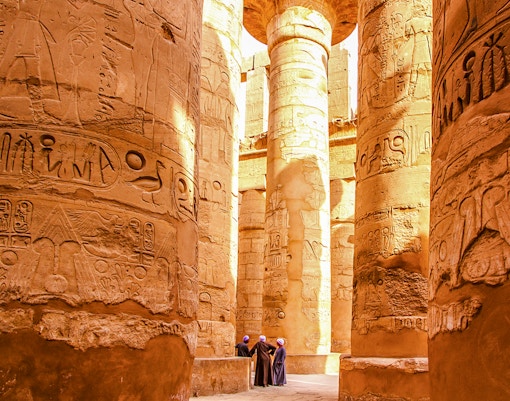
Karnak Temple
Sometimes visible from above on full-day tours, Karnak is the largest religious complex ever built. Its vast columns, obelisks, and sanctuaries stretch for kilometers along the East Bank.
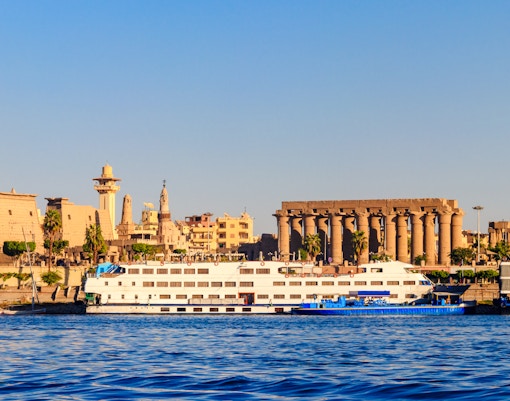
Ancient Thebes
Once Egypt’s capital during the New Kingdom, Thebes sprawled across both banks of the Nile. From your basket, you can spot remnants of palaces, necropolises, and sacred sites that once defined the empire.
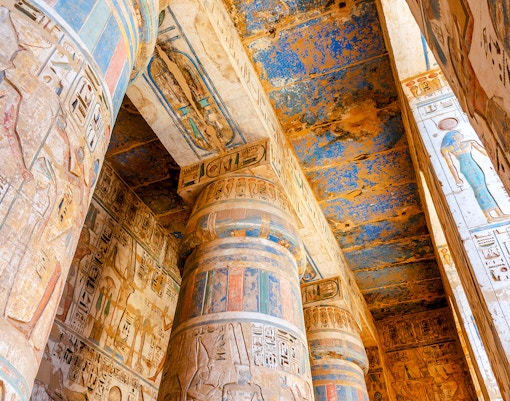
Tomb decorations
Even millennia later, the vibrant colors of royal tomb murals survive. Each one tells a story of the pharaoh’s journey to the afterlife, and the landscape above hints at the treasures below.
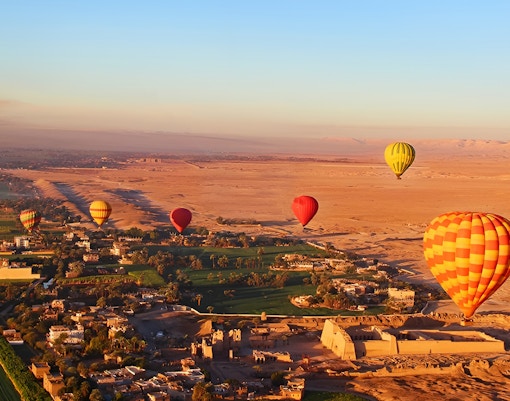
Ongoing discoveries
Archaeologists still uncover new tombs and treasures on the West Bank. Balloon riders sometimes glimpse dig crews at dawn—catching history in the making as Egypt continues to reveal its secrets.
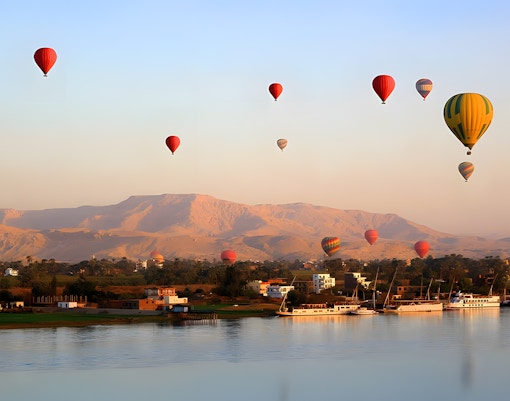
Sunrise flights
All balloons launch at dawn, when the air is calmest and visibility best. The result? Perfect panoramas of the Nile Valley painted in gold and pink—the ideal setting for photos.
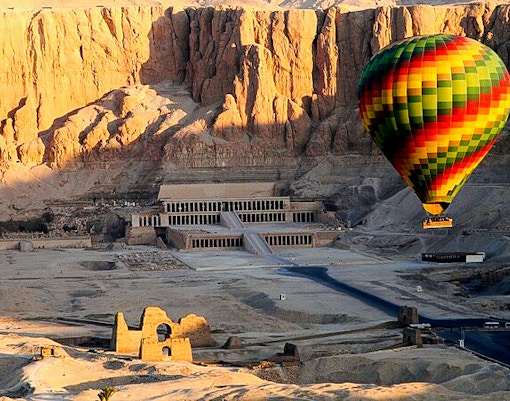
Balloon altitude
Rides float at roughly 300–600 meters (1,000–2,000 feet). This height provides sweeping views of the temples and tombs below, while still keeping landmarks clearly visible.

Safety and tradition
Every flight is overseen by licensed, highly experienced pilots under strict Civil Aviation Authority standards. After landing, passengers receive a commemorative flight certificate—a long-standing Luxor tradition.

Passenger capacity
Standard balloons hold 12–28 passengers in divided compartments. Private flights, ideal for couples or small groups, are much smaller and offer more space for photographers.
Frequently asked questions about Luxor hot air balloon facts
Yes, you’ll glide right over this royal necropolis, where more than 60 tombs—including Tutankhamun’s—are hidden beneath the cliffs.
Ancient visitors wrote that the statues made musical sounds at dawn, likely from cracks warming in the stone. They remain a striking sight from the air.
Flights typically float between 300–600 meters (1,000–2,000 feet), giving sweeping sunrise views of the Nile, the West Bank temples, and distant desert mountains.
Carved into dramatic cliffs, this mortuary temple stands out with its geometric terraces and striking symmetry.
Yes, archaeologists frequently uncover new chambers and artifacts. From the balloon, you might even spot dig sites where history is still unfolding.
Every rider is awarded a commemorative flight certificate—a traditional keepsake marking your sunrise adventure over Luxor’s ancient treasures.
